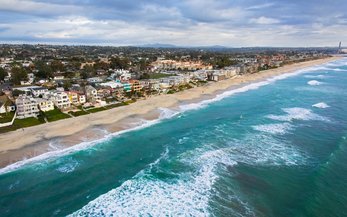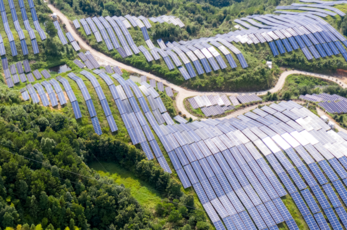9 Minutes04/08/2024
The European Union's latest advancement in ESG reporting for EU businesses, known as the Corporate Sustainability Reporting Directive (CSRD) comes into effect starting in 2024. This newly established directive will supersede the Non-Financial Reporting Directive (NFRD) that was previously in place, impacting businesses of all sizes.
Regardless of whether a company was already complying with the NFRD, had an existing ESG program, or is new to ESG reporting, the implications of the CSRD will be profound throughout the European business landscape. As deadlines loom, it is crucial for companies to grasp their responsibilities under the new standard and prepare to meet its requirements.
In this article, we break down what the CSRD is, who has to comply, when it comes into effect, what is included in a CSRD report, why you should start preparing, and more.
Let’s dive in.
What Is the Corporate Sustainability Reporting Directive (CSRD)?
The Corporate Sustainability Reporting Directive (CSRD) is a European Union law that mandates large companies to disclose information about their environmental, social, and governance (ESG) impacts. This directive supersedes the EU's Non-Financial Reporting Directive (NFRD) and will soon impose more comprehensive ESG reporting obligations on numerous companies, both within and outside the EU.
The primary objective of the CSRD is to furnish investors and stakeholders with essential data concerning the investment risks associated with sustainability issues, such as climate change. Furthermore, it emphasizes the importance of transparency in revealing how companies influence the environment and society.
What’s the Difference Between the NFRD and CSRD?
The CSRD encompasses a much wider range compared to the NFRD, especially regarding reporting requirements. While the NFRD only pertained to large public-interest entities with over 500 employees as per the EU Accounting Directive, the CSRD includes smaller companies and those outside the EU over the next three years.
As the CSRD implementation progresses, it is anticipated that over 50,000 organizations will be required to start reporting according to the CSRD requirements, a substantial increase from the 12,000 currently covered by the NSRD. By significantly increasing participation, the CSRD aims to play a crucial role in advancing Europe's goal of achieving carbon neutrality by 2050.
When Do Businesses Need to Start Reporting Under the CSRD?
For businesses operating in the EU, the first reporting year under CSRD will be in 2024, with those reports due in early 2025. Over the next four years, the program will be phased in, with more time given to those organizations not currently falling under the scope of the NFRD.
Companies subject to the CSRD’s first reporting year will proceed as follows:
January 2024 – companies already subject to the NFRD, i.e., EU large public-interest entities and their parent organizations with more than 500 employees
January 2025 – all other large undertakings listed in the EU that do not currently meet the NFRD scope, as well as large non-EU undertakings or parent undertakings listed on an EU-regulated market with more than 250 employees
January 2026 – EU-listed small and medium-sized undertakings.
The EU considers small undertakings to be those with fewer than 50 employees and less than €4 million ($4.9 million USD) on their balance sheet or €8 million ($9.9 million USD) net turnover.
The EU considers medium undertakings to be those with more than 50 employees but less than 250, and with between €4 million ($4.9 million USD) and €20 million ($24.6 million USD) balance sheet total or between €8 million ($9.9 million USD) and €40 million ($49.3 million USD) net turnover.
January 2026 is also the first phase-in date for non-EU small and medium-sized undertakings listed on EU-regulated markets, however, this can be extended to January 2028 if they provide a written explanation as to why the required information isn’t provided in their annual management report.
January 2028 – non-EU undertakings not listed on an EU-regulated market. In other words, international businesses that are not listed in EU-regulated exchanges but doing business in the EU.
What Exemptions Are There to the CSRD?
Once the program is fully phased in, there are very few exemptions to the CSRD, especially with the goal of dramatically expanding sustainability reporting in the European business community.
Enhancing transparency and comparability in sustainability reporting is another of the major goals of the CSRD. Because of this, reporting companies’ CSRD reports will have to be included in their annual management reports and not stored elsewhere.
Non-European Union companies and parent companies that already engage in similar sustainability reporting are exempt from creating an additional CSRD report. However, they may be required to reference their current sustainability initiatives and reports in their annual management reports.
What Needs to be Included in a CSRD Report?
The disclosures that a reporting company needs to provide in its CSRD report are outlined in the European Sustainability Reporting Standards (ESRS). The ESRS was finalized by the European Commission in July 2023 as standards that apply to all eligible companies regardless of their sector or industry. The finalized ESRS is made up of two cross-cutting standards and includes disclosures in the following areas:
General disclosures
Environmental disclosures
Climate change
Pollution
Water and marine resources
Biodiversity and ecosystems
Resource use and circular economy
Governance disclosures
Business conduct
Social disclosures
Own workforce
Workers in the value chain
Affected communities
Consumers and end users
Each standard and set of disclosures above has individual documents to guide companies on what needs to be included in their report, however, is it also important that companies look at this as one program because many of the disclosures and standards reference one another. Below we take a closer look at each set of disclosures.
Environmental Disclosures
One of the biggest elements of environmental disclosures is the climate change disclosures, which are designed with the goal of documenting an organization’s contributions to limiting global temperature increases by 1.5℃.
To be in line with the Paris Agreement, these reductions need to be met by 2030, with Net Zero achieved by 2050. Companies will need to disclose their emissions of the following greenhouse gasses (GHGs):
Carbon Dioxide (CO2)
Hydrofluorocarbons (HFCs)
Methane (CH4)
Nitrous Oxide (N2O)
Nitrogen Trifluoride (NF3)
Perfluorocarbons (PCFs)
Sulphur Hexafluoride (SF6)
As the global norm continues to evolve, organizations will need to disclose their greenhouse gas emissions for Scopes 1, 2, and 3. This entails collecting data throughout the value chain and recognizing any potential duplication in emissions calculation among supply chain partners to avoid inaccuracies.
Apart from greenhouse gases, the environmental disclosures encompass measuring other emissions and discharges into the air, water, and soil, along with details regarding water consumption, discharge, and storage. While reporting GHGs is a standard expectation for all companies, the necessity to disclose these supplementary metrics will depend on their specific operational activities.
As indicated by the name, pollution disclosures are related to pollution of air, land, and water. The primary focus should be on preventing pollution by gradually eliminating raw materials and substances that could harm the environment. In cases where complete elimination is not feasible, businesses ought to highlight the measures they have implemented to minimize pollution using technology, as well as their efforts in revitalizing, renewing, and converting polluted ecosystems.
Specific quantifiable pollution disclosures include emissions of:
Air pollutants
Water
Inorganic pollutants
Ozone-depleting substances
Sometimes, it may be challenging to directly quantify yearly emissions. In cases where this information is not accessible, companies have the option to use approximations, provided that they reveal the process used and include a declaration regarding the accuracy or uncertainty of the data in their pollution disclosures.
Reporting companies will also need to disclose any microplastics generated or used.
Water and marine resources are another area that companies will need to disclose, including information about their policies relating to water and marine resources and the actions they are taking, and resources they’ve allotted to these policies on a yearly basis. Annual water consumption will also need to be quantified, including the amount of water that has been taken from areas of material water risk and high-water stress.
Within their water disclosures, companies will also have to quantify how much water was recycled, used, and stored. The last step is to determine the potential financial effects of water-related impacts, risks, and opportunities.
The comprehensive nature of environmental disclosures requires companies to go beyond just measuring emissions. They must also reveal the potential business risks and opportunities associated with rising temperatures. Additionally, they need to outline their initiatives to preserve the value of raw materials and products, ultimately leading to waste reduction and decreased resource consumption.
Governance Disclosures
The current Business Conduct standard encompasses all governance disclosures, focusing on specific business practices outlined by the CSRD, which include:
Corporate culture
Managing relationships with suppliers
Preventing corruption and bribery
Undertaking engagement in political influence, such as lobbying
Safeguarding whistle-blowers
Upholding animal welfare standards
Payment practices, especially concerning late payments to small and medium enterprises
Within governance disclosures, companies are required to disclose details on their policies regarding the aforementioned practices. They should also provide information on how concerns related to business activities are received, documented, and resolved. If policies are lacking for any of the mentioned areas, the organization must outline when they will be developed.
Social Disclosures
In addition to the increasing risk of climate change, the COVID pandemic has highlighted weaknesses in the European economy concerning the stability of the workforce and supply chains. It is crucial for reporting organizations to focus on their social disclosures to effectively identify and address both risks and opportunities in these areas. Some of these areas include:
Collective bargaining
Diversity indicators
Adequate wages
Social protection
Persons with disabilities
It has become crucial for European Union (EU) companies to recognize and disclose key indicators concerning health and safety, training, skills development, and work-life balance. Creating a work environment that prioritizes the well-being of employees is essential for ensuring long-term economic stability. Apart from disclosing information about their workforce, businesses also have a responsibility to disclose details regarding employees in their value chain, customers, and the broader community.
ESG initiatives emphasize the importance of accountability and transparency. EU companies must demonstrate not only their ethical operations and fair treatment of employees but also their commitment to collaborating with suppliers and vendors who share similar values, irrespective of their global location. The efficacy of an ESG strategy often hinges on engaging stakeholders effectively. Suppliers, vendors, and customers should all grasp the benefits of endeavors to nurture and sustain a responsible business model.
Why Start Preparing Today for CSRD Reporting?
Many organizations are approaching their first CSRD report deadline in the next year or two. This makes it crucial to begin gathering information for reporting now, especially for organizations that have not previously fallen under the NFRD regulations and are new to ESG initiatives. The ESRS is a thorough process that necessitates input and support from all levels of the organization, including subsidiaries and entities located both inside and outside the EU.
Teams responsible for preparing reports will encounter a learning curve, uncover data gaps that must be filled before setting reasonable targets, and ensure compliance with the first CSRD reporting deadline in January 2025 for major companies in 2024. It's essential to understand that meeting the 2030 Paris Agreement deadline to restrict global temperature increases to 1.5℃ will demand significant carbon emission reductions of 90-95% across all Scopes, requiring in-depth analysis, transitioning to new energy sources and technologies, and a fundamental shift in business operations.
Achieving such substantial change is a long-term endeavor, and companies must establish a dedicated team to lead ESG efforts, streamline data collection, and maintain confidence in the quality and accuracy of their reports.
How can I prepare for the CSRD reporting obligation?
THE POWER OF THREE. AMCS, a global leader in environmental software solutions, has unified Quentic & Figbytes, market leaders in safety & sustainability, to complement its global suite of technology solutions that power foundational industries.
The Quentic and FigBytes platforms combine data collection, management and calculation with powerful reporting tools that simplify every EHSQ and sustainability challenge. By supporting stakeholders from the boardroom to the assembly line, AMCS, Quentic, and FigBytes power smarter, safer, and more sustainable operations
With the large time commitment and amount of data from across multiple geographies required for a CSRD report, a cloud-based software like the AMCS ESG Solution can:
Streamline data collection and centralize sustainability information
Automate GHG accounting and calculations in real-time
Update methodologies used to comply with internationally accredited frameworks
Customize reports to meet the requirements of individual ESG standards including ESRS
The time to start preparing for your CSRD deadline is now. If you’re ready to begin, schedule a meeting with an AMCS solutions advisor today to learn how we can help streamline your sustainability reporting and climate disclosure program.



